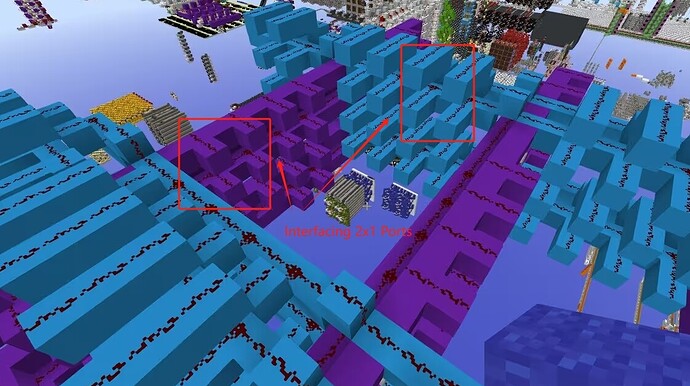(It says new user can only use 1 image so i combined all pics in this single one ![]() ):
):
The conventional 2x1 vertical wiring configuration requires repeaters or other components to interweave two vertical wire bundles (Fig. 1), which introduces additional latency. Well, it can actually be completely avoided with some special wiring configuration (Fig. 2).
I call this approach WCT. With this approach you can interlace two vertical wire bundles directly without the need for additional components or complex rerouting.
It has several advantages:
- It eliminates the need for repeaters or other intermediary devices.
- Two wire bundles can interlace seamlessly without extra overhead.
- Easy to interface with conventional 2x1 configuration
This method could be particularly useful for circuits involve a lot of interwoven wiring such as bidirectional buses, crossbar buses, or NoC(“network on chip”) routers. Of course due to redstone signal attenuation, repeaters are still unavoidable for maintaining signal strength, so this isn’t exactly a killer solution for all scenarios.
Fig. 3, 4 below shows a simple bidirectional bus design. Strictly speaking, it’s more of a bidirectional wire than a complete bus module (which has some implemented bus protocol).
Here are some additional details: (See the picture)
I Think this could be quite useful for interconnect modules or system integration? If anyone is considering implementing an automated redstone wiring tool (circuit synthesis), this could also be as a standard wiring configuration, partially reduces 3D wiring problem to 2D.
*Well, actually you could just do it like this: (See a2.png)
It’s worth mentioning that while this design looks very simple, it’s actually quite hard to come up with if you haven’t seen it before. (How would you make two vertical 2x1 redstone wire bundles directly pass through each other?) You could try ask someone with this question without enough hints, I’ve asked a lot and no one got it right, really XD.



